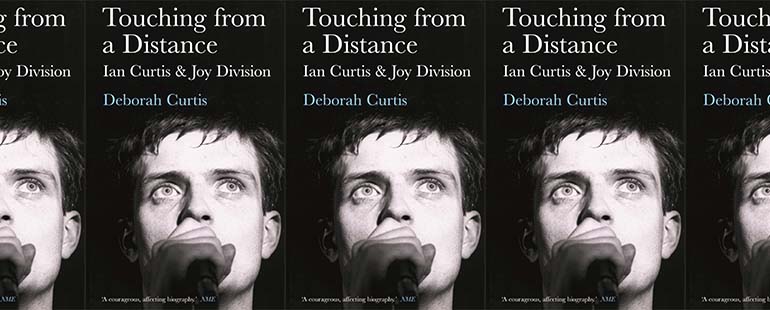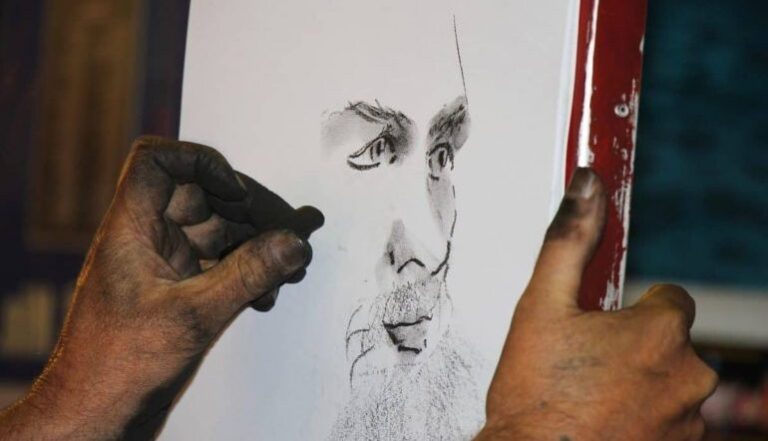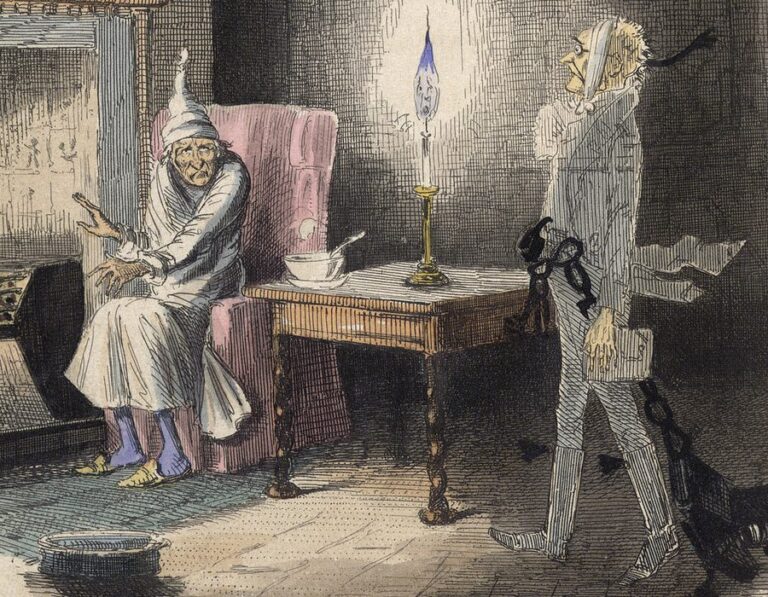Unmaking the Myth of Ian Curtis

It’s easy to fall in love with Ian Curtis. I discovered Joy Division, the post-punk band Curtis was the lead singer for, in college. Most of my musical tastes at that point were shaped by my father, who played Bob Dylan for us during our teenage meltdowns and passed along old U2 cassettes. But he had never heard of Joy Division, and the band became my own in a way that made me love them even more. Late at night, in the dark, I would put my phone on my pillow, open Spotify, and let the lyrics of “Atmosphere,” a song written in the final years of Curtis’s life, wash over me:
Walk in silence
Don’t turn away, in silence
See the danger,
Always danger. . .
Don’t walk away.
If there’s any better evocation of the uncertainty of young adulthood, I haven’t found it.
Curtis was born and raised in Manchester, UK before rising to fame with Joy Division; he struggled with epilepsy and died by suicide in 1980 at the age of twenty-three. I was a few years younger when I first listened to Joy Division, and now I’m a few years older, but I can still see what drew me to him. It’s the lure of the artist who burns too bright and dies too soon, who embodies a slice of the overwhelming loneliness and despair that engulfed me when I first encountered his lyrics.
By the time I picked up Touching from a Distance: Ian Curtis and Joy Division, Deborah Curtis’s 1995 biography-cum-memoir of her husband’s life and their troubled marriage, I knew that this picture was incomplete, although I was perhaps unprepared for just how real and flawed Curtis’s portrayal of Ian would be. The Ian of Touching from a Distance is crueler, more human, and more tragic than popular conceptions allow of him. The book, therefore, moves beyond pop culture mythmaking, in the process creating the connection Joy Division’s music reaches for but is never able to grasp.
If fans like me have a skewed perception of Ian’s life and legacy, it’s not from bad faith, at least not entirely. In his foreword to Touching from a Distance, Jon Savage refers to Ian as “a singer and lyric writer of rare, mediumistic power”—about as close as you can come to deifying any artist—and other remarks from his contemporaries support this vision of a man set apart for a unique and tragic destiny: in a quote that reads as equally bitter and wrenching, Tony Wilson, co-founder of Factory Records, remarks, “He wanted to be a romantic hero and he succeeded,” while record producer Martin Hannett describes him as “one of the those channels for the gestalt.” Though these thoughts aptly characterize the mood evoked by his lyrics, they do notuncover the person behind them.
Much of Ian’s mysteriousness no doubt comes from Joy Division’s discography, which abounds with imagery of loss and isolation instead of easy answers. From the “blind destruction” of “Transmission” to the “no man’s land” of “Disorder” and the haunting estrangement of “Love Will Tear Us Apart,” Joy Division’s lyrics call out from a place melancholy and fear, begging for an unseen “guide to come and take me by the hand.” It’s beautiful stuff, but does little to illuminate the material life these words sprang from.
As Ian’s widow, Deborah Curtis is well placed to give a fuller account of her husband’s personality and psychological struggles. Her early freezing out from Joy Division gigs points to a reality the band’s image attempted to evade—as Curtis writes, “If Ian was going to play the tortured soul on stage, it would be easier without the watchful eye of the woman who washed his underpants.” The Ian of her memories has a ring of truth about him that can’t be replicated by comments on the gestalt or nods to his artistic prowess.
Understanding Ian also means coming to terms with the reality of his control and abuse, of Curtis specifically. She says that their relationship, begun when both were in their teens, was built upon Ian “tak[ing] control of my life very early on,” first by isolating her from friends and family, and later by lashing out through physical abuse. Curtis may be more aware than his bandmates of the suicidal ideation Ian expressed from an early age, but her knowledge of his troubled mental state can’t excuse the destructive behavior he acts out over and over again. Their marriage is plagued by a failure in communication, which seems to spring from Ian’s refusal to open up. At one point, Curtis is so frustrated when he turns away from her in bed that she “bit[es] into his back in desperation.” He kicks her to the floor.
Curtis reveals Ian to be a deeply lonely individual whose loneliness springs not from artistic greatness, but from a self-imposed isolation. “As his own judge and gaoler,” Curtis notes, “he had engineered his own hell and planned his own downfall.” It’s also possible that the depression he struggled with throughout his life made connection impossible. The cruelty Ian vents on his family and friends in his worst moments seems to spring from the same mixture of anger and despair as his inability to confide in those closest to him, suggesting that the feelings motivating the abuse of his wife also gave rise to his lyrical genius. The Ian Curtis of Joy Division is inseparable from Ian Curtis the abuser.
Another myth Touching from a Distance challenges is how Ian’s epilepsy affected his life and music. As his condition worsened, it became embedded in the popular perception of Joy Division, particularly when his signature onstage dances would devolve into epileptic seizures. Curtis’s biography, however, shows its detrimental effect on Ian and his family. Worsened by a hectic touring schedule, his seizures become so intense that he is afraid to hold his newborn daughter, Natalie. When an exhausted Deborah insists he help her by putting the baby to bed, the “anguished look” on his face after he comes back terrifies her so much she thinks he’s smothered their daughter. Ian’s disease, along with his continued refusal to communicate with Curtis, becomes an extended familial trauma, stretching their already fractured marriage to the breaking point.
Only after Ian moves out and Curtis begins to plan for a divorce are the couple able to find some connection again. At a restaurant, Ian admits to the difficulties he’s been experiencing on tour, and she tells him “not to worry . . . because I had already begun making a new life.” It’s a rare moment of shared vulnerability, and it highlights the extraordinary empathy Curtis has for Ian, in spite of his abuse of her. Touching from a Distance makes it clear that she knows her husband deeply and is able to understand and sympathize with his emotions even though they cause her pain. Writing about the contents of his suicide note, in which he claimed to love her and their daughter and hate his girlfriend Annik Honoré, she says, “He couldn’t have hated Annik . . . . I think he wrote that to try to please me.” Her tone is matter-of-fact rather than pitiful. She simply knows her husband too well to take refuge in a comforting fantasy.
In the lyrics to “Atmosphere,” Ian’s narrator begs the listener not to “turn away, in silence.” Throughout this and other Joy Division songs, he seems to plead for connection. Despite, or perhaps because of, his inability to open himself up, Joy Division’s lyrics conceptualize love as reaching towards another in their darkest moments, as an ability to see down to the pain lurking underneath the surface. Curtis’s biography is a meditation on and manifestation of the limitations of this love, creating an unmatched portrait of Ian’s art and life, and also showing that even the most discerning partner cannot help unless the other is willing to be helped. In the book’s final paragraphs, Curtis writes that Ian “nurtured us with his promises of success . . . . before he abandoned us on the precipice.” Outside of time, Touching from a Distance is able to reach across that precipice and, finally, take Ian Curtis by the hand.


